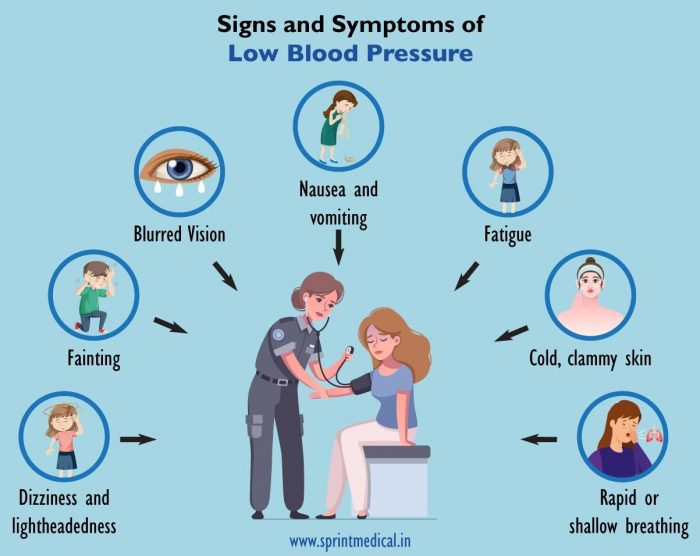
Low blood pressure, or hypotension, is a condition in which the heart doesn’t pump enough blood to maintain normal circulation. The body’s organs and tissues don’t receive enough oxygen-rich blood and can become seriously damaged. Although low blood pressure itself isn’t harmful, it can be dangerous if not treated properly. If you suspect that you might have low blood pressure or are concerned about a loved one’s condition, read on for signs and symptoms of low blood pressure.
Dizziness
Dizziness is a common symptom of low blood pressure, but it can also be caused by other conditions. It’s important to rule out other possible causes before assuming your dizziness is due to low blood pressure. If you feel dizzy when you stand up or if the room spins when you’re sitting down, this may be a sign of orthostatic hypotension (OH). OH occurs when gravity causes your brain’s blood supply to decrease rapidly, resulting in lightheadedness and/or fainting. This type of dizziness usually goes away once your body has adjusted its posture; however, if it persists for more than 30 minutes after standing up again then please see a doctor immediately as this could indicate an underlying health condition such as high blood pressure (hypertension) or heart disease.
Fainting
Fainting, or the sudden loss of consciousness and muscle control that happens when your blood pressure drops too low, can be caused by a number of factors. These include dehydration, low blood sugar, drug use (including over-the-counter medications), standing too long without moving or sitting down, or anemia. As you might imagine, fainting spells are scary if they happen while you’re driving–but they’re also dangerous because they can lead to injury from falling when you collapse.
Blurred Visions
Blurred vision is a common sign of low blood pressure. It can be caused by stress, lack of sleep, alcohol or caffeine consumption and dehydration. Blurred vision can also indicate a stroke or aneurysm (a bulge in an artery). If you have these symptoms along with other signs like dizziness or weakness on one side of your body then seek medical attention immediately because it could be serious.
Nausea
Nausea is a feeling of uneasiness, sickness, or faintness. It’s also a sign of low blood pressure. Nausea can be caused by many things–including anxiety and stress–and it’s often treated with drinking water or eating something light. If you have nausea along with other symptoms (like dizziness), talk to your doctor right away!
Fatigue
Fatigue is a common symptom of low blood pressure. If you’re feeling tired and sluggish, it could be because of other factors like lack of sleep or stress. But if these symptoms persist for more than a few weeks, it’s worth seeing a doctor–especially if they’re accompanied by other signs of low blood pressure: dizziness, fainting and blurred vision.
Cold Skin
Cold skin is another common sign of low blood pressure. If you’re experiencing cold skin, it’s important to note that this symptom can also occur with other medical conditions. For example, if you are suffering from hypothyroidism (low thyroid) or Raynaud’s disease (a condition in which blood vessels narrow and restrict circulation), then your hands and feet will feel cold even when the rest of your body feels warm. Cold-caused discomfort can be relieved by raising your body temperature by taking a hot bath or shower or drinking warm fluids such as tea or coffee. Other ways to raise one’s temperature include wearing socks or slippers indoors; using heating pads over specific areas like the neck; wrapping up in blankets; eating spicy foods like curry dishes that increase metabolism rate; exercising lightly outside when weather permits so long as there isn’t snow on ground level yet!
Rapid Breathing
Rapid breathing is one of the most common symptoms of low blood pressure. It’s also a sign of other health conditions, such as asthma, heart failure and nervousness. If you are experiencing rapid breathing and think it might be caused by your blood pressure being too low, talk to your doctor about treatment options.
If you are experiencing any of these symptoms, it’s important to see a doctor. Low blood pressure is usually not harmful but can be dangerous if not treated.
